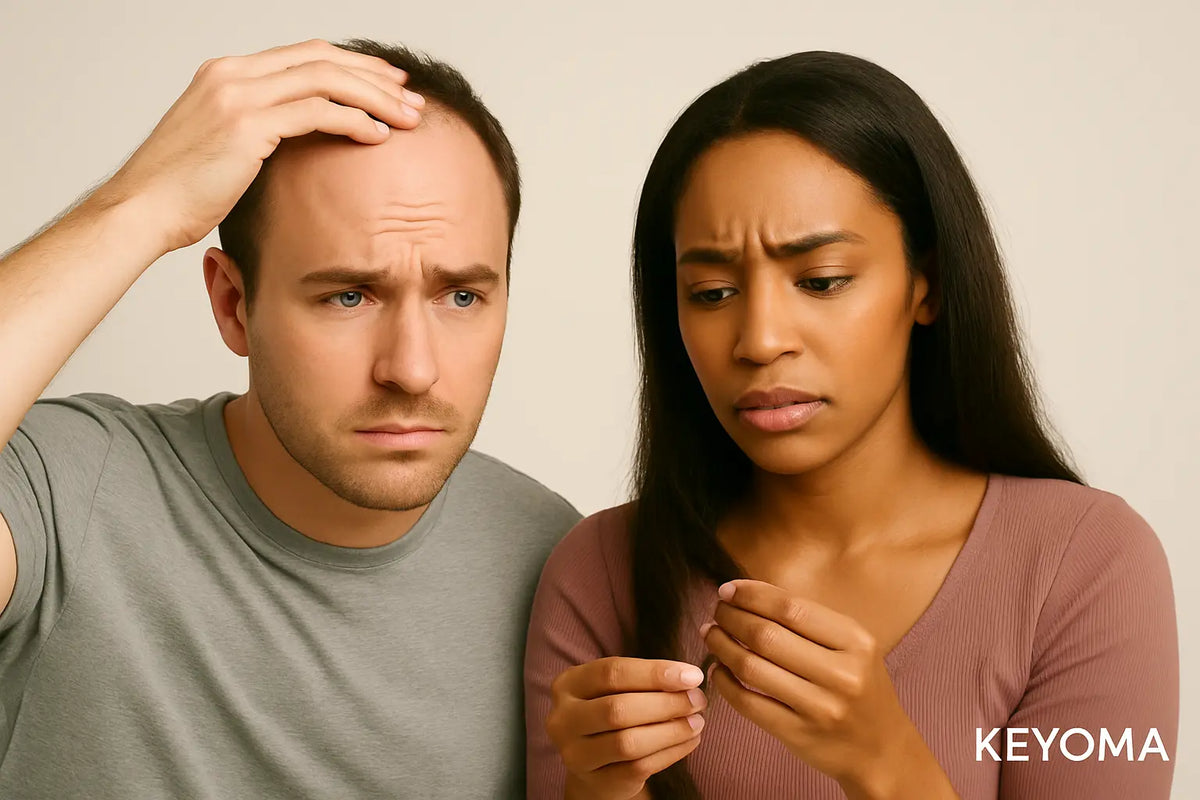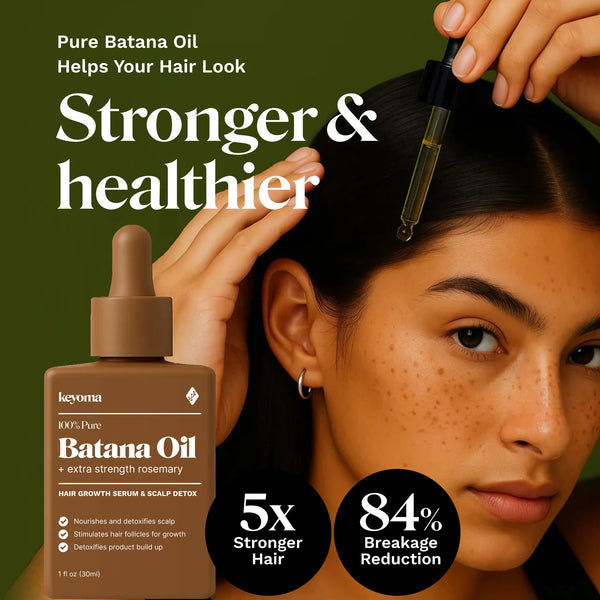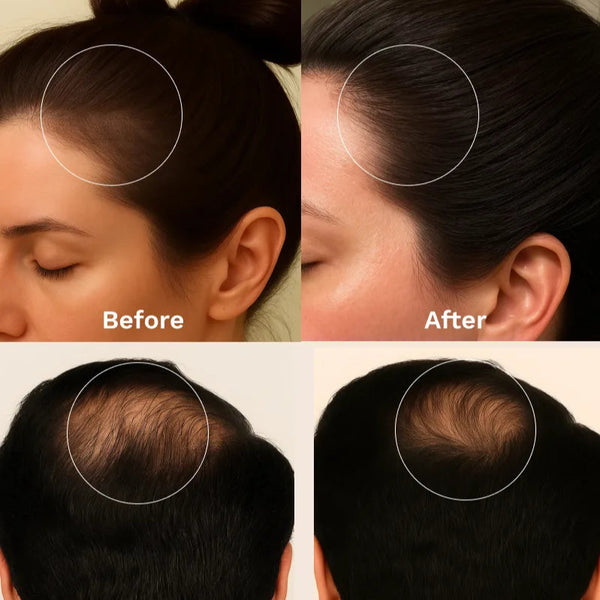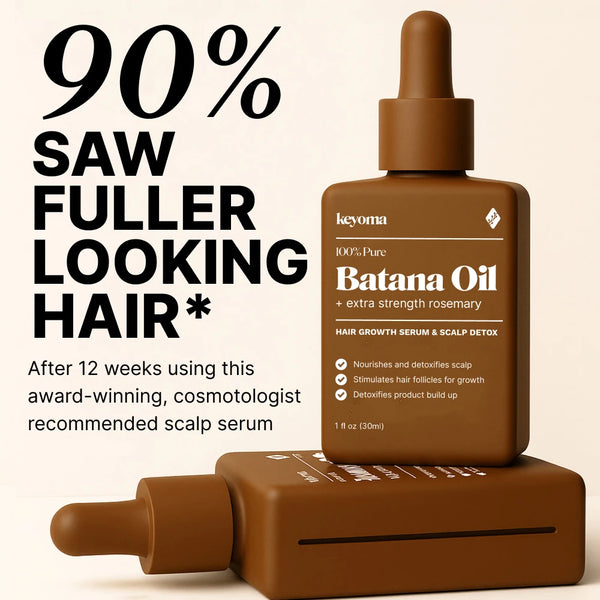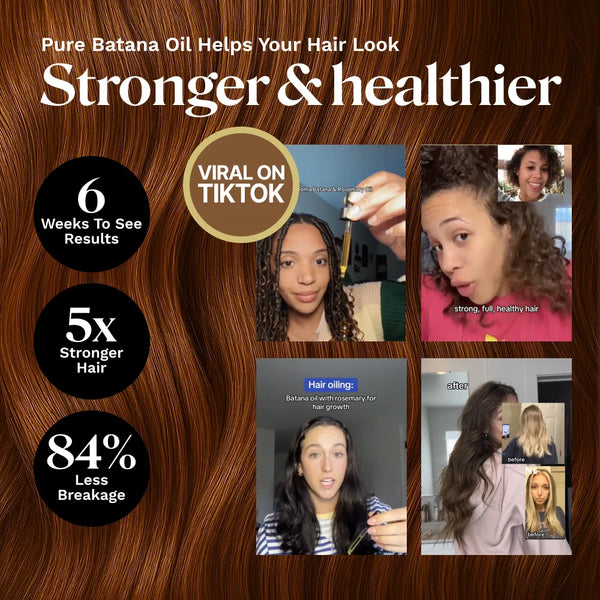In this article
Ever caught yourself in the mirror thinking, “Wow, I’m way too young to have hair like my grandpop”? Or maybe, “How did my part line suddenly got wider and my ponytail thinner?” Either way, the question hits the same. Why the heck am I balding so fast?
The truth is, hair loss can come from many directions. And before you freak out, remember this: some causes are temporary and reversible, while others—like genetics or thyroid issues—are more permanent and may call for professional input.
In this guide, I’ll walk you through the reasons behind rapid hair loss, how to tell if it’s something you can manage at home, and when it’s best to seek a doctor’s advice.
First, Is It “Balding” or Just Temporary Shedding?
Before you switch to panic mode at the sight of hair on your pillow or clogging the shower drain, take a pause and remember—not every strand you lose means you’re balding.
In fact, it may just be shedding, which is part of the hair’s natural cycle. Shedding is usually temporary, while balding leans more toward something permanent. Let’s break down the difference between the two:
Hair Shedding
Shedding is built into the natural cycle, called the exogen phase, where older "dead" hairs fall to make way for fresh growth. Each strand on your head has its own timeline, so losing some daily is expected.
In fact, the American Academy of Dermatology notes that losing around 50 to 100 hairs a day is normal. That's to say those strands left on your hair brush after styling or that small clump in the shower drain after washing is usually no cause for concern
Another thing that's considered normal is shedding toward the end of summer (or start of fall). Extra strands come out because more follicles are in the telogen, or resting, phase. This is often called "seasonal hair loss" and it usually balances out on its own.
Actual Balding
Balding, on the other hand, is more than just a temporary spike in shedding. It’s usually a progressive process and is often linked to genetics, hormonal changes, or certain medical conditions.
If you notice one or more of these patterns, it’s a stronger sign that true hair loss may be happening:
-
Bald patches or smooth scalp spots
-
A receding hairline, especially the classic temple “M” shape
-
Thinning at the crown
-
A widening part that keeps getting broader
-
Patchy loss in different areas of the scalp
Common Causes for Rapid Balding & What to Do
Genetics
For most people, genetics is the number one culprit to blame for progressive thinning that eventually leads to balding. The technical term for this is androgenetic alopecia, often called male‑pattern or female‑pattern baldness.
This condition is driven by inherited sensitivity to the hormone DHT, which causes follicles to shrink over time. In men, it shows up as a receding hairline or crown thinning. In women, it usually appears as a wider part and overall density loss on top of the scalp.
How do you confirm if genetics is to blame here? The simplest way is looking into your family history. If close relatives experienced early thinning in the same pattern, chances are high yours is genetic too.
A dermatologist can also run a scalp exam and, in some cases, order blood work to rule out other conditions.
What to do:
The truth is, it’s a long shot to completely reverse genetically caused balding. After all, we can’t change our DNA. But that doesn’t mean you can’t take steps to protect the hair you still have (and that should be the goal).
Here are some approaches to slow the process:
-
Proven treatments: Minoxidil, prescription finasteride (for men), and low-level laser therapy have all shown evidence of slowing genetic hair loss.
-
Hair-nourishing oils and scalp massage: Regular use may support circulation and help keep follicles healthier for longer.

Emotional Stress
Emotional stress isn’t just in your head. It can show up in your hair too. Life events like grief, a painful breakup, money problems, or even the slow grind of burnout from a 9‑to‑5 can all push the body into a stressed state.
When this kind of pressure lasts for weeks or months, it’s enough to push more follicles into the resting phase, leading to more shedding.
What’s really happening under the surface is that stress ramps up cortisol, the body’s main stress hormone. Cortisol shifts resources away from what it sees as non‑essential—like hair growth—so it can protect vital organs.
What to do:
Once the emotional weight lightens and your body settles, hair often begins to recover on its own. While you wait for that process, below are some steps you can take to help your scalp and overall well-being.
-
Prioritize stress management with sleep, movement, and relaxation practices like meditation or therapy.
-
Massage your scalp gently to release tension and encourage circulation.
-
Avoid crash diets, since sudden calorie restriction can shock the body and worsen shedding
Postpartum & Perimenopause
Hormonal changes are another common trigger for sudden shedding, especially after childbirth or during the perimenopause years.
In both cases, estrogen levels—which normally help keep hair in the growth phase—drop pretty drastically. As a result, more follicles are pushed into resting mode, which explains the extra hair showing up on your pillow, brush, or shower drain.
Postpartum hair loss typically peaks around three to four months after delivery and often improves by your baby’s first birthday.
Perimenopausal thinning, on the other hand, tends to be more gradual, showing up as overall density loss or a widening part line.
What to do:
The good news is that while you can’t stop these hormonal shifts completely, you can take steps to minimize the fallout and support healthier regrowth:
-
Be gentle with styling. Avoid tight ponytails or heavy extensions while shedding is active.
-
Prioritize balanced nutrition. This helps offset the stress of hormonal changes.
-
Seek medical input if needed. If hair loss is severe or doesn’t improve within the usual timeline, see a dermatologist who can check hormone levels and recommend treatment.
Nutrient Gaps
Food fuels your hair follicles the same way it fuels your body. So when you’re not getting enough of the right nutrients, you speed up the path to visible thinning and even balding.
Strands may turn brittle, fall more often, and new growth struggles to come in, making the scalp look sparser over time.
There are many signs of nutritional deficiencies, but a common one is brittle nails or pale skin showing up alongside thinning hair (often a sign of low iron).
What to do:
The good news is that most nutrient gaps can be fixed with consistent diet changes. Here are the basics to focus on:
-
Protein first. Hair is made of keratin, a protein. Make sure meals consistently include protein sources like fish, eggs, or legumes.
-
Key micronutrients. Iron, zinc, vitamin D, and omega-3s all support strong hair growth. Think of iron from lean meats or spinach, zinc from pumpkin seeds and chickpeas, vitamin D from fatty fish and fortified dairy, and omega-3s from salmon, chia seeds, or walnuts.
-
Take supplements. Of course, only after a doctor confirms and advises it. As much as possible, aim to get these nutrients from balanced meals.
Check this article out if you want to dive deeper into the best foods for hair growth.
Thyroidism
An underactive (hypothyroidism) or overactive thyroid (hyperthyroidism) can both disrupt normal hair growth and speed up visible balding.
Thyroid hormones help regulate your metabolism, and when they’re out of balance, the growth cycle of hair follicles is affected. That’s why people with thyroid conditions often notice progressive thinning or early balding alongside other symptoms like fatigue, weight changes, or changes in skin texture.
What to do:
If you suspect thyroid imbalance, see a doctor as soon as possible. This is not something to self-diagnose.
With proper medical treatment and hormone regulation, hair often begins to recover in several months.
Fungal Infections
Fungal infections of the scalp, like ringworm (tinea capitis), attack the follicle at its base. The fungus digs into the hair shaft, inflames the surrounding skin, and weakens the strand at the root until it breaks off.
This often leaves behind a bald circle that can spread if untreated and form more patches.
In the worst cases, repeated infections create permanent scars and destroy the follicle—a condition known as scarring alopecia. This leads to irreversible bald spots that stay for good.
What to do:
Unfortunately, no home remedies or over-the-counter topicals can fully treat this. See a doctor or dermatologist for proper diagnosis and prescription-strength antifungal medication.
The important thing is to get it treated early to prevent infection from spreading or turning into permanent damage.
Styling Habits
Styling might seem harmless day to day, but repeated pressure on follicles can turn into a real trigger for balding. Tight ponytails, braids, weaves, or frequent use of heat tools all put stress on strands and the scalp.
When done consistently, this can lead to traction alopecia, a form of hair loss where follicles are literally pulled until they weaken and stop producing new hair.
If you’re noticing thinning or small bald patches along your hairline or temples, that’s a telltale sign. In fact, if you’ve ever felt soreness or tenderness after wearing tight styles, that discomfort is your scalp warning you.
What to do:
The best move is to choose looser, lower-tension styles. Swap tight ponytails for low ponytails, messy buns, or looser braids.
Or if you really love your braids, try alternating. Wear them one day, then let your hair flow freely or rest in a softer style the next. That balance helps your follicles recover and lowers the risk of permanent damage.
Hair Product Use
Frequent use of harsh chemical relaxers, dyes, or bleaching agents works by breaking down the natural protein bonds in the hair shaft. This strips away protective cuticles and can irritate the scalp’s outer layer in the process.
With repeated use, the damage may even reach the follicle itself, disrupting growth and making balding more likely.
What to do:
From my experience, the most obvious first step is this: if your scalp feels itchy, sore, or develops flakes or redness soon after product use, stop using it immediately.
If your lifestyle or line of work requires you to keep up with frequent treatments, the key is to space them out as much as possible. Choose gentler formulas, and follow every session with restorative care, like deep conditioners, protein masks, or nourishing oils.
Alopecia Areata
Alopecia areata is an autoimmune disease where the body’s own immune system mistakenly attacks hair follicles. This disrupts growth and can lead to sudden bald patches on the scalp or other parts of the body.
In some cases, it can progress further and may even extend to the eyebrows, eyelashes, or body hair.
What to do:
I recommend seeing a dermatologist promptly for diagnosis and treatment options. Oftentimes, corticosteroid injections or topical treatments are prescribed to help calm the immune response and encourage regrowth.
Frequently Asked Questions (FAQs)
Why am I balding all of a sudden?
Sudden balding can happen because of stress, illness, hormonal changes, or even medication side effects. Most of the time, this is linked to temporary shedding that usually resolves within a few months.
However, if it doesn’t improve—or if you notice a lot of hair loss happening all at once—it’s worth checking in with a doctor to rule out anything more serious.
Is balding permanent?
Balding caused by factors like stress, childbirth, or nutrient gaps are often temporary and reversible. Genetic balding, however, is typically permanent. The goal then shifts to slowing the process and protecting the hair you still have with proven treatments and supportive care.
How do I know if balding is stress‑related or genetic?
Stress‑related shedding usually shows up two to four months after a stressful period and looks diffuse across the scalp. Genetic balding, on the other hand, follows a pattern. This includes a receding hairline, thinning crown, or widening part, which often mirrors family history.
Can natural oils help with balding?
Oils can’t directly reverse genetic balding, but they can support a healthier scalp and keep it clean, creating the right environment for existing strands to thrive and for new growth to come in.
When paired with regular scalp massage, nourishing oils also help improve circulation, which makes it easier for nutrients to reach your roots.
Slow Down Balding Before It's Too Late
As we’ve discussed, the answer to why you’re balding so quickly often depends on the cause.
Some triggers—like stress, childbirth, or nutrient gaps—are usually temporary, and your hair can recover with time and care. Others, like genetics, thyroid issues, fungal infections, or autoimmune diseases, are more serious and may need a doctor’s input.
Still, whatever the cause, the best way to slow down visible balding is to consistently care for your scalp and hair. That means keeping it clean, avoiding harsh styling, and giving it the attention it deserves.
And what better way to give that TLC than with a nourishing hair oil?
A true hair-nourishing oil does more than moisturize. It protects the scalp, supports circulation when massaged in, and strengthens existing strands so they last longer before shedding.
That’s why I recommend trying Keyoma’s Batana Oil infused with Rosemary. It brings together the restorative properties of Batana oil with rosemary’s well-known ability to support scalp health. It’s quick, easy to use daily, and gives your scalp the best environment for new hair to thrive. Try it today!
Featured Product
100% Pure Batana Oil + Rosemary
↓Best Batana Oil to Buy↓
1 Month
Subscribe & Save
- 30-day supply delivered monthly $35
- 30% off for life $6
- Free haircare essentials kit $33
- Free custom wooden comb $10
- Free scalp massager $15
- Free eco-friendly travel bag $8
- 30-Day Money Back Guarantee
- Free Shipping
- Online portal for easy cancel, skip, or pause.
1 Month One Time Purchase
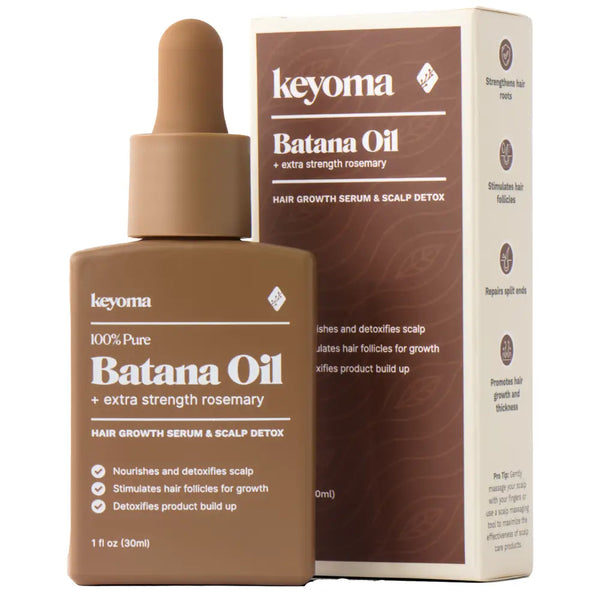
- 30-day supply $50
- 30% off for life $6
- Free haircare essentials kit $33
- Free custom wooden comb $10
- Free scalp massager $15
- Free eco-friendly travel bag $8

